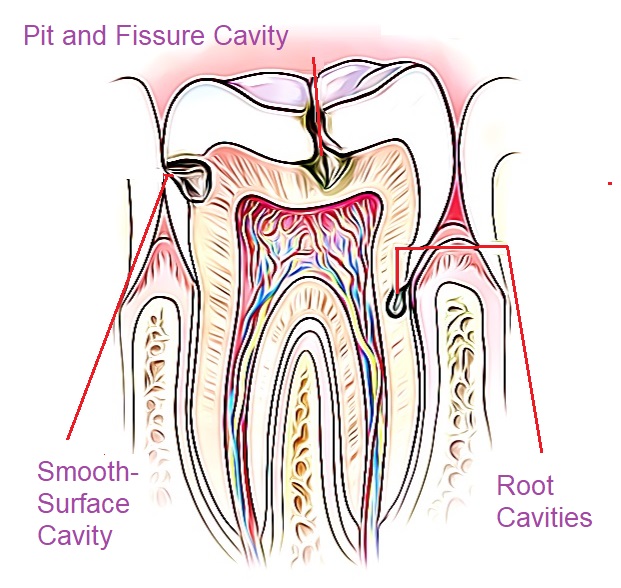How To Remove Stain Not Cavity? Easy Solutions
Removing stains from teeth without causing cavities requires a gentle yet effective approach. Tooth stains can be caused by a variety of factors including food and drink, smoking, and poor oral hygiene. The good news is that many stains can be removed with the right techniques and products, preserving the health and appearance of your teeth.
Understanding Tooth Stains
Before diving into the solutions, it’s essential to understand the nature of tooth stains. Stains can be classified into two main categories: extrinsic and intrinsic. Extrinsic stains are those that form on the surface of the teeth due to external factors such as diet and smoking. Intrinsic stains, on the other hand, occur within the tooth enamel itself, often due to trauma, aging, or exposure to certain chemicals during tooth development.
Identifying the Type of Stain
Identifying whether you have an extrinsic or intrinsic stain is crucial for selecting the appropriate removal method. Extrinsic stains are typically easier to remove and respond well to brushing, professional cleaning, and whitening products. Intrinsic stains, being embedded within the tooth, may require more intensive treatments such as dental veneers or professional bleaching under the supervision of a dentist.
Home Remedies for Stain Removal
Several home remedies can help remove extrinsic stains without causing cavities. It’s crucial, however, to use these remedies judiciously to avoid damaging the enamel.
- Baking Soda and Water: Mixing baking soda with water to form a paste can help remove surface stains. Use a soft-bristled toothbrush to gently brush your teeth with this paste, then spit it out and rinse with water. Do this once or twice a week, as overuse can erode enamel.
- Hydrogen Peroxide: Using a hydrogen peroxide mouthwash or mixing it with baking soda can help whiten teeth. However, always dilute the hydrogen peroxide with water (usually 1 part hydrogen peroxide to 2 parts water), as undiluted hydrogen peroxide can damage tooth enamel.
- Strawberry and Baking Soda: Some people swear by the combination of mashed strawberry and baking soda as a natural teeth whitening agent. The malic acid in strawberries is believed to help break down stains.
Professional Solutions
For more stubborn stains or to ensure safety and effectiveness, consulting a dental professional is the best course of action. Dentists can offer various treatments tailored to your specific needs.
- Professional Teeth Cleaning: Regular dental cleanings can effectively remove plaque, tartar, and surface stains, helping to prevent both stains and cavities.
- Teeth Whitening: Professional teeth whitening treatments use stronger agents than over-the-counter products and are applied under controlled conditions to minimize risks and maximize results.
- Dental Veneers: For intrinsic stains or more severe discoloration, dental veneers can provide a long-lasting solution. Veneers are thin layers of porcelain or composite material bonded to the front of the teeth, completely covering the stained area.
Prevention
Preventing stains from forming in the first place is the most effective way to maintain the appearance and health of your teeth.
- Regular Brushing and Flossing: Maintaining good oral hygiene practices, including brushing your teeth at least twice a day and flossing once a day, can significantly reduce the formation of plaque and tartar, which contribute to staining.
- Limit Staining Foods and Drinks: Beverages like coffee, tea, and red wine, as well as foods like berries and soy sauce, are known to cause stains. Limiting consumption or using a straw for drinks can help minimize contact with your teeth.
- Regular Dental Check-Ups: Visiting your dentist regularly for check-ups and cleanings can help identify and address any oral health issues, including stains, before they become major problems.
Conclusion
Removing tooth stains without causing cavities is a delicate process that requires careful consideration and the right approach. By understanding the nature of the stain, using appropriate home remedies judiciously, and seeking professional help when needed, you can maintain a healthy, stain-free smile. Remember, prevention through good oral hygiene and dietary choices is key to avoiding stains in the first place.
What are the most common causes of tooth stains?
+The most common causes of tooth stains include consumption of staining foods and drinks (like coffee, tea, and red wine), smoking, poor oral hygiene, and the natural aging process. Certain medications and medical conditions can also lead to tooth discoloration.
How can I prevent tooth stains?
+Preventing tooth stains involves maintaining good oral hygiene (brushing and flossing regularly), limiting the consumption of staining foods and drinks, avoiding smoking, and visiting your dentist for regular cleanings and check-ups.
Are home remedies for stain removal safe for everyone?
+While home remedies can be effective for some, they may not be safe for everyone. For example, individuals with sensitive teeth or certain dental work should consult their dentist before using any whitening products or home remedies. It’s also important to follow instructions carefully and use these remedies in moderation to avoid damaging tooth enamel.
